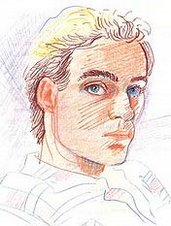Baden, Austria, is a charming historic resort town located just south of Vienna, renowned for its natural hot springs and elegant atmosphere. For centuries, it has been a popular destination for rest and relaxation, attracting nobility, artists, and visitors seeking wellness. Among its cultural highlights is the Beethovenhaus, the apartment where Ludwig van Beethoven spent several summers and composed parts of his Ninth Symphony. The town also features the renowned Casino Baden, one of Europe’s grandest and most beautiful casinos, adding to its reputation as a refined leisure destination. Today, Baden continues to blend its rich cultural heritage with modern comforts, offering visitors a unique and relaxing experience. I spent most of a day there a few years back. I was impressed by the park surrounding the Casino with a remarkable statue that I explain below.
Also, scroll down to see a link to more photos from my trip there that show Beethoven's apartment where he stayed when he would visit there and work on his music compositions.
 |
| “Nude Rider” by Josef Müllner in the park next to the Baden Casino. It might be a warning to Casino goers not to gamble & lose all their money! |
The Nackter Reiter (Naked Rider) is a bronze sculpture by Austrian sculptor Josef Müllner, located in the Kurpark of Baden bei Wien, Austria. Created between 1908 and 1910, it depicts a nude young man riding a Percheron horse. The rider’s pose is dynamic yet harmonious, with one hand resting confidently on the horse’s hindquarters and the other raised to shield his eyes, as if scanning the horizon. Both horse and rider face the same direction, conveying unity and shared focus, with the horse’s laid-back ears suggesting attentiveness to the rider.
The sculpture stirred controversy at the time of its creation due to its nudity, reflecting the era’s prudish sensibilities. Plans to install it in Vienna, first at Lothringerstraße/Pestalozzigasse and later near the French Embassy at Schwarzenbergplatz, were blocked by local authorities who deemed it a “danger to public morals.” Eventually, it found a home in Baden’s Kurpark, acquired by the Moderne Galerie (now part of the Belvedere Museum’s collection).
Müllner, born in Baden in 1879 and active until his death in 1968, was known for his neoklassizist style and fascination with human-animal symbiosis, a theme evident in the Nackter Reiter. The work showcases his skill in capturing natural movement and anatomical detail, influenced by his studies of animals, including consultations with the director of Vienna’s zoological garden. The sculpture’s patination, done by Robert Pfeffer at the Erzgießerei AG Wien, enhances its tactile quality.
The Nackter Reiter also carries cultural weight. Financed by a wealthy patron, possibly industrialist Karl Wittgenstein, it was exhibited at the Vienna Secession in 1909, where it drew attention for its bold form and mythic resonance, evoking classical figures like centaurs or Chiron. Its placement in Baden, Müllner’s hometown, ties it to the region’s artistic heritage, though it remains a quieter testament to his legacy compared to his more famous works, like Vienna’s Lueger Monument.
Today, it stands as a striking piece in the tranquil Kurpark, inviting reflection on the interplay of human and animal, freedom and restraint, and the tensions between art and societal norms. If you’re visiting Baden, it’s worth seeing for its craftsmanship and the story it tells about early 20th-century Austria.
Below is a 3D interactive scan of “Nude Rider”
 |
| A view of the Casino complex at Baden which has been a resort town for generations. |






No comments:
Post a Comment